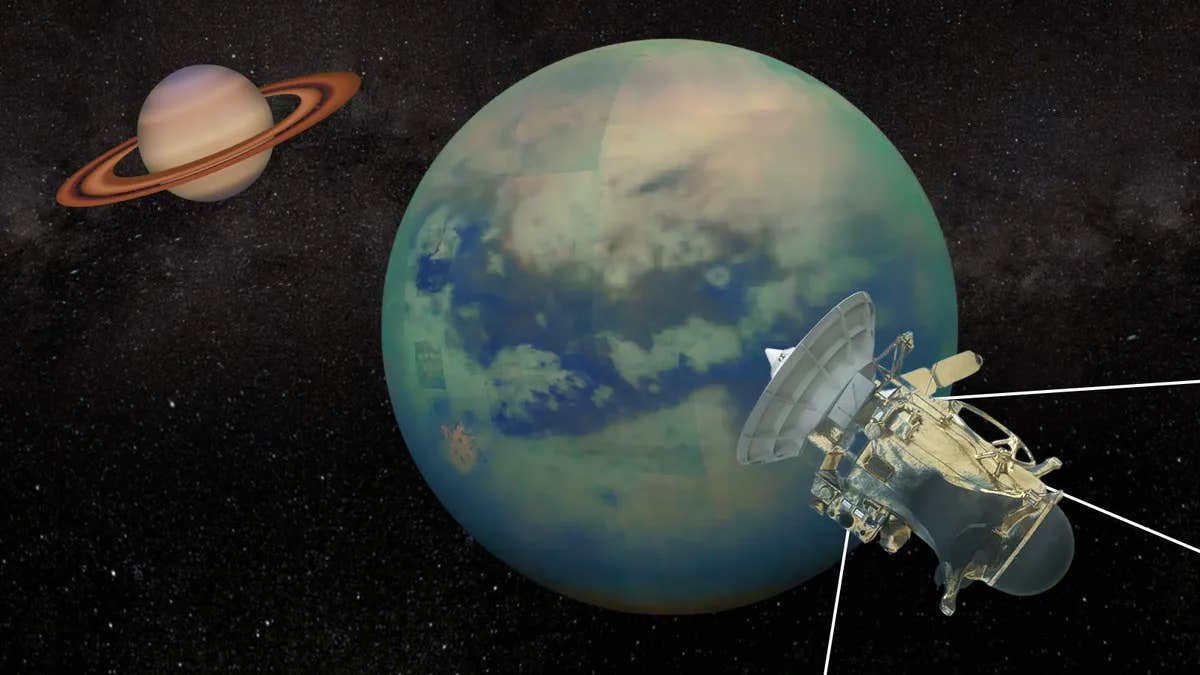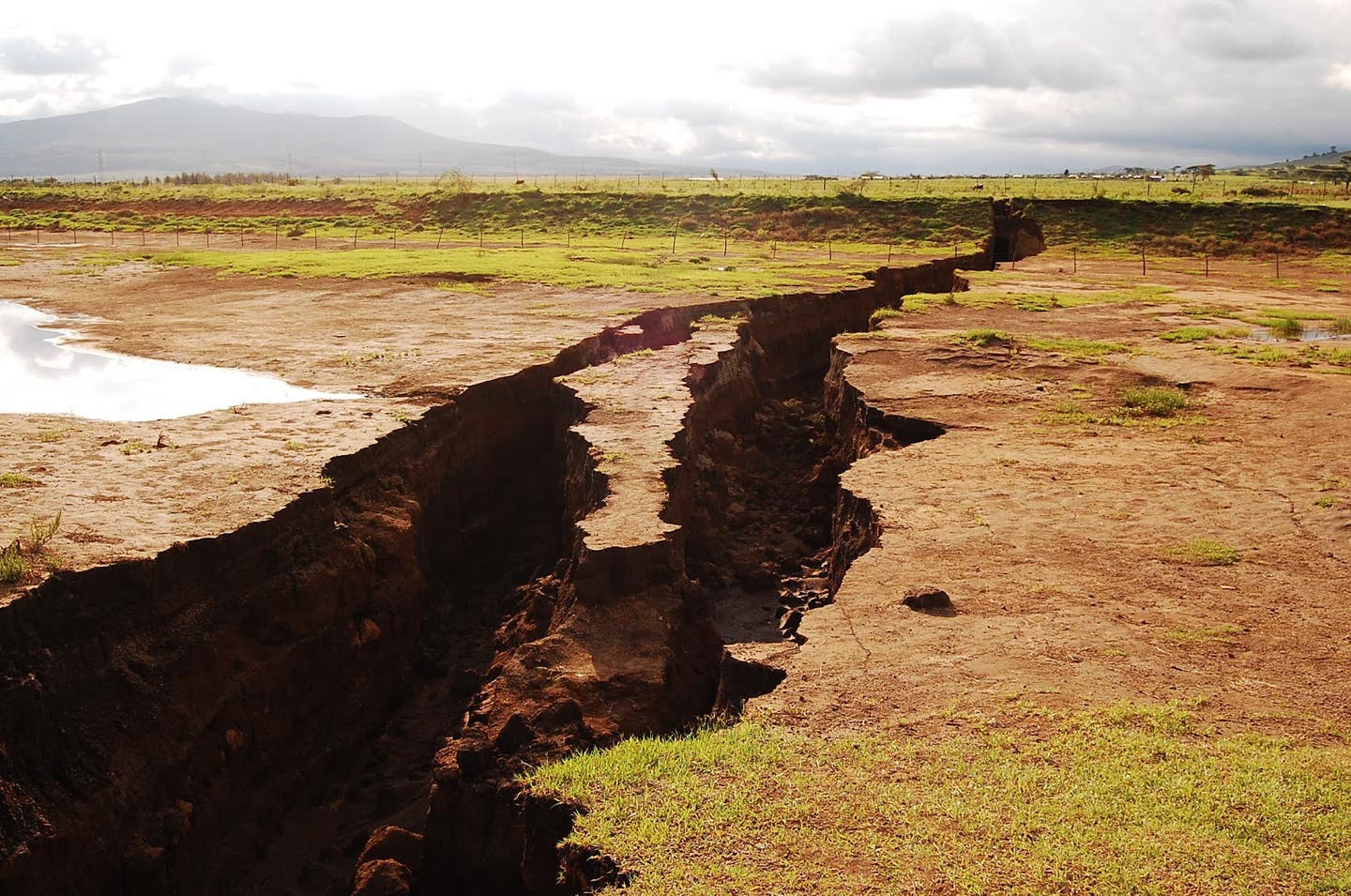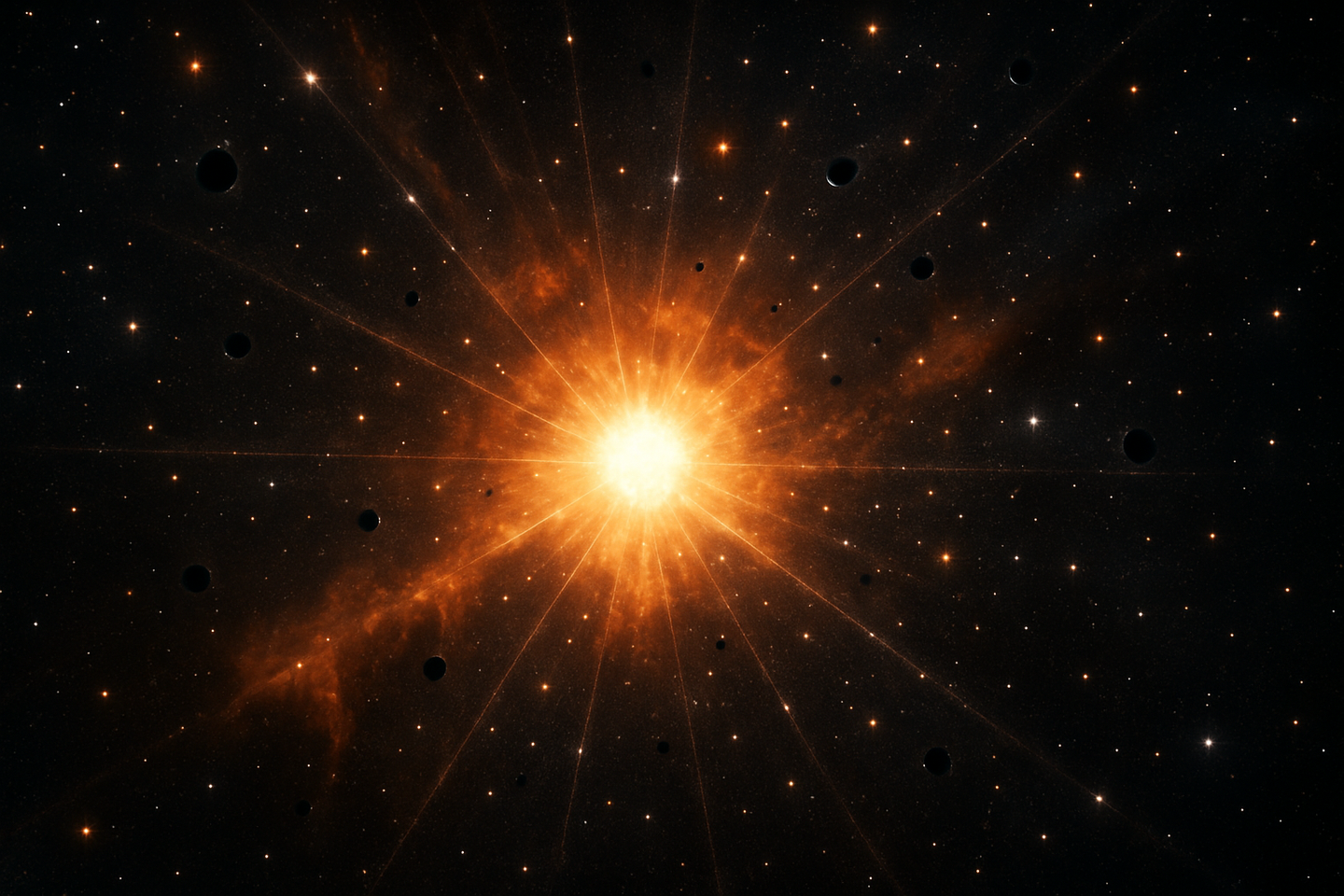Scientists design orbiting satellite networks for detailed exploration of Titan
Scientists test new satellite constellation designs to enable long term monitoring of Titan’s lakes, dunes, and atmosphere.

 Edited By: Joseph Shavit
Edited By: Joseph Shavit

A new study explores how a small fleet of satellites could hold steady orbits around Titan and watch its shifting surface for years. (CREDIT: NASA/Robert Lea)
When you think about the worlds that might tell you something about life’s beginnings, Titan often rises to the top of the list. Saturn’s largest moon is cold, dim, and wrapped in a thick orange haze, yet it behaves in ways that feel strangely familiar. Rivers of liquid methane carve valleys. Broad lakes shift with the seasons. Winds sculpt long lines of dunes. That mix of mystery and similarity has pushed scientists to imagine what it might take to keep a steady watch on this distant world.
A recent study shows that a network of small satellites could someday orbit Titan for years and give you a constant view of its shifting landscape.
Why Titan’s environment forces creative solutions
Titan’s appeal comes with real complications. You face a moon with uneven gravity that tugs at spacecraft in unpredictable ways. Certain regions pull a little harder, while others barely tug at all. These subtle changes can nudge a satellite off course.
Titan also has a dense atmosphere that reaches far into space. If a spacecraft drops below roughly 1,500 kilometers, the drag can pull it even lower, placing the mission at risk. Thick haze scatters light and limits what cameras can see unless they look through narrow “windows” in the atmosphere.
Because Titan sits so far from the Sun, your spacecraft must conserve every bit of power. You cannot afford to spend fuel making constant corrections. That challenge pushed a team of researchers from São Paulo State University, the National Institute for Space Research, and the Universidad de Zaragoza to turn to a design tool called the 2D Necklace Flower Constellations method. Their goal was to see whether a small fleet could hold stable orbits and revisit key areas often enough to study Titan’s lakes, dunes, and surface chemistry.
Designing orbits that can hold their shape
To survive in Titan’s environment, you need orbits that stay steady on their own. The team relied on two ideas that help keep a spacecraft on track. The first is the frozen orbit, which uses a specific mix of eccentricity and angle to cancel out some of the drift caused by gravity.
The second is the repeat ground track. In this pattern, a satellite circles Titan in a rhythm that lines up with Titan’s rotation so it passes over the same areas again and again. When you combine these approaches, you reduce the small pushes and pulls that normally force frequent adjustments.
The researchers studied how Titan’s strongest gravitational harmonics, particularly J2 and J4, shape the motion of satellites at a wide range of distances from the surface. Below about ten Titan radii, Titan’s own gravity controls the motion. Farther out, Saturn and other moons play a larger role. This helped the team identify orbital regions that promise long-term stability.
Building the constellation with the Necklace method
Traditional systems often use the Walker framework, but the Necklace method gives you more room to adapt to Titan’s quirks. It spaces satellites using number theory so that they share the same size, tilt, and shape while remaining evenly positioned along their orbits. This approach can even include “fictitious positions,” which act like empty slots. They make it easier to test many options and then choose the one that works best.
The team selected six satellites placed in two orbital planes, mirroring successful constellations used around Earth and Mars. They used phase space diagrams to study how each satellite’s position relates to the others. From there, they refined the designs to meet all frozen orbit and repeat ground track requirements.
Testing two possible constellations
The first proposed design, called Titan I, targets the polar regions. These high latitudes hold Kraken Mare, Ligeia Mare, Punga Mare, Jingpo Lacus, and Ontario Lacus, which are all rich in hydrocarbons. To monitor these features, the team chose orbits tilted at about 73 degrees. Simulations showed that the satellites kept steady coverage, revisiting the polar lakes at regular intervals and staying on predictable paths.
Still, polar orbits can be sensitive to a phenomenon called the Kozai Lidov effect. When the team added extra gravitational disturbances from Saturn and Titan’s higher order harmonics, one satellite dipped too low after about 2.7 months. A real mission would need small corrections now and then to keep the constellation safe.
The second design, Titan II, focused on the equatorial regions, including the Huygens landing site and sprawling dune fields. These orbits used a tilt of about 11 degrees. Even after the simulations added stronger gravitational effects, all six satellites stayed above the drag boundary and kept their frozen behavior. They held their repeating patterns for the entire five year test.
Overall, equatorial constellations handled Titan’s quirks better than near polar ones. The results also showed that Saturn’s influence cannot be ignored when planning long term missions.
A clearer path toward exploring a distant world
The study suggests that you can build a reliable satellite constellation around Titan that lasts for years. The Necklace method’s flexibility makes it easier to avoid collisions and keep each spacecraft on track. With only six satellites, you can watch Titan’s surface shift, map its geology, and follow changes in the methane cycle with far more detail than a single craft could match.
Lead author Lucas S. Ferreira said the approach brings mathematical structure and real world physics together in a way that could support missions such as NASA’s Dragonfly. His team hopes the model will guide future missions to Titan and other moons with complex gravity.
Research findings are available online in the journal Satellite Navigation.
Related Stories
- Titan’s icy surface hides a chemical mystery that could explain how life began
- Saturn's largest moon Titan has a baffling atmosphere that wobbles and spins like a gyroscope
- Saturn's moon Titan may support trace amounts of life, study finds
Like these kind of feel good stories? Get The Brighter Side of News' newsletter.
Joshua Shavit
Science & Technology Writer and Editor
Joshua Shavit is a Los Angeles-based science and technology writer with a passion for exploring the breakthroughs shaping the future. As a co-founder of The Brighter Side of News, he focuses on positive and transformative advancements in AI, technology, physics, engineering, robotics and space science. Joshua is currently working towards a Bachelor of Science in Business and Industrial Engineering at the University of California, Berkeley. He combines his academic background with a talent for storytelling, making complex scientific discoveries engaging and accessible. His work highlights the innovators behind the ideas, bringing readers closer to the people driving progress.



